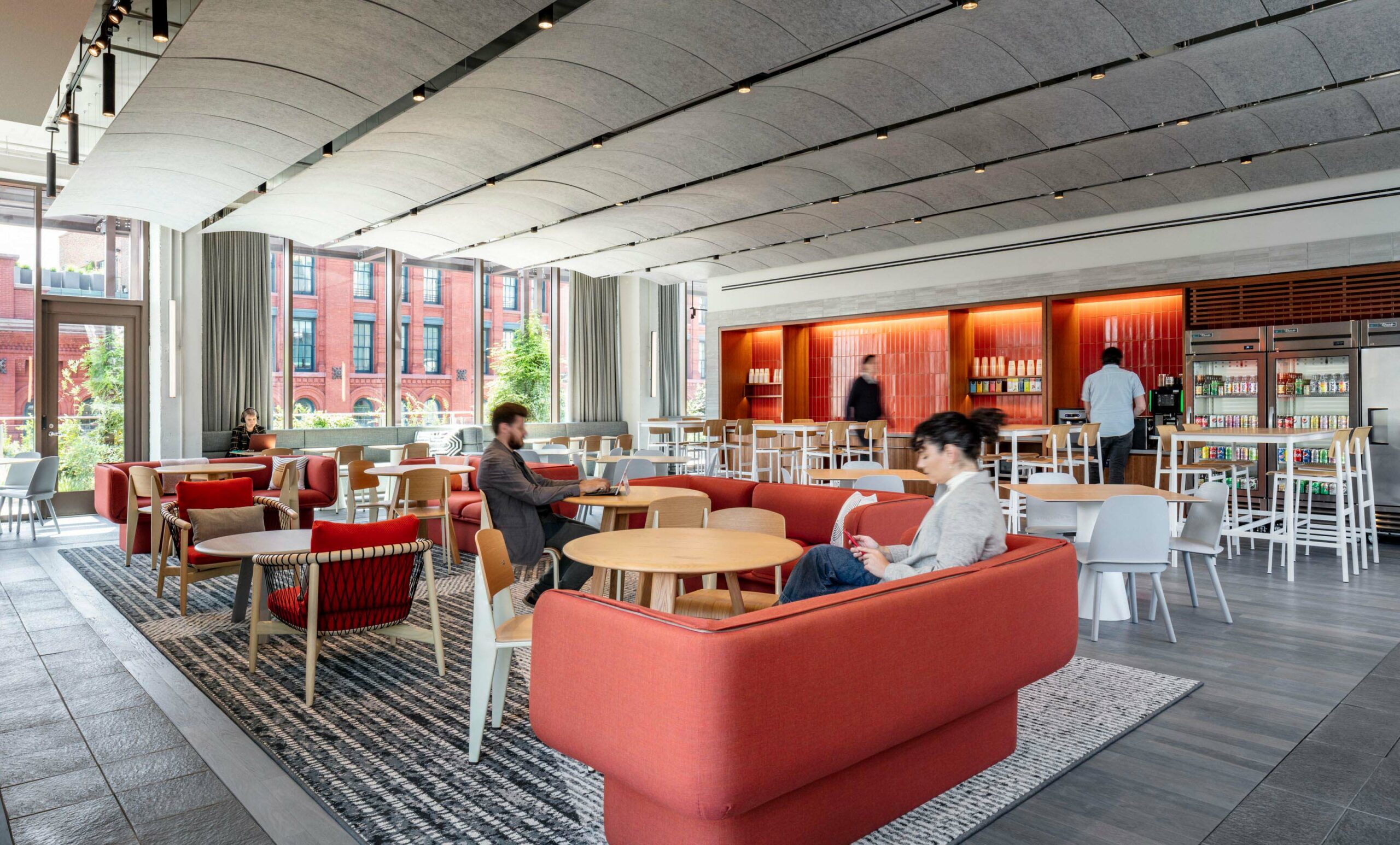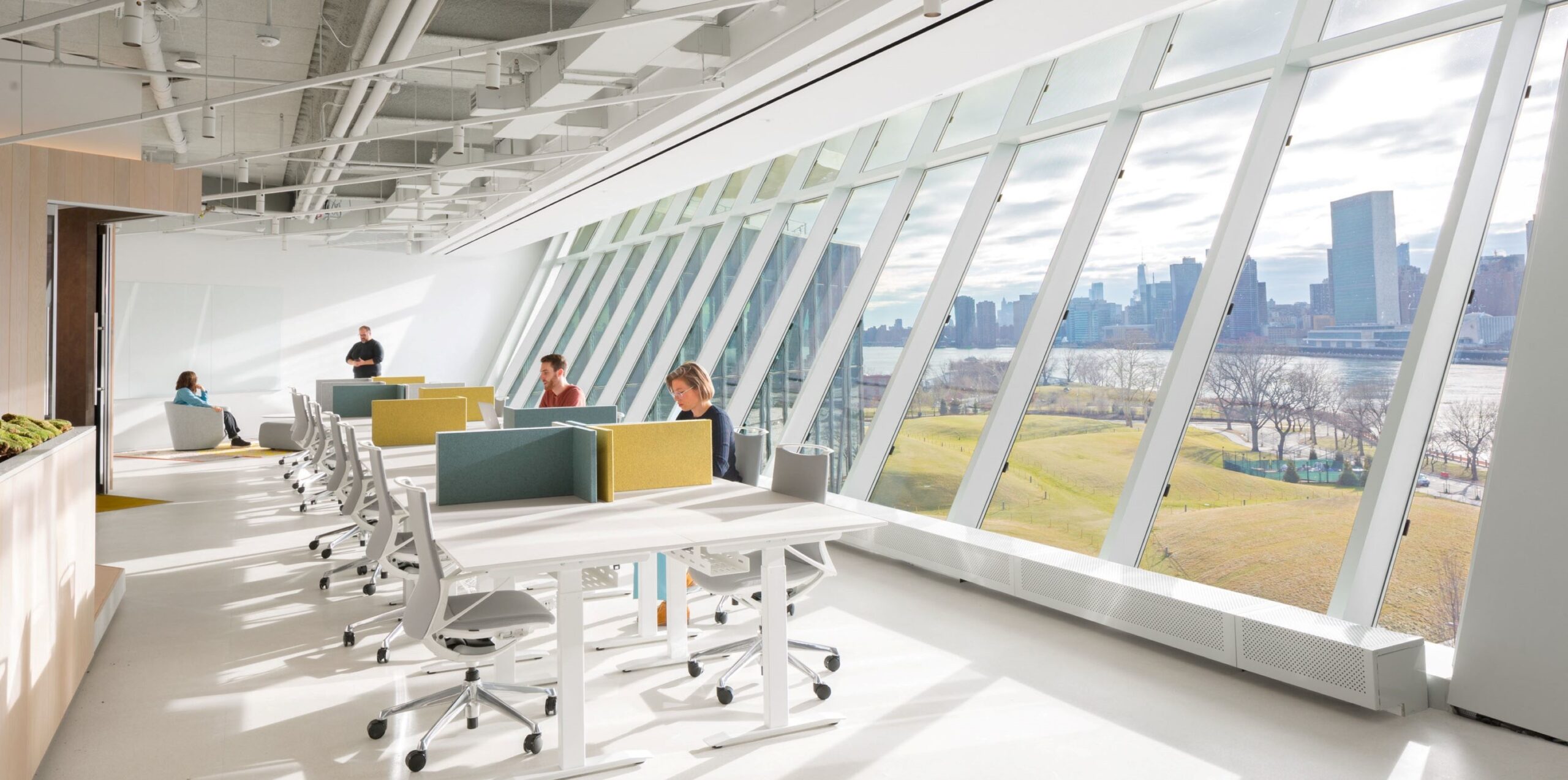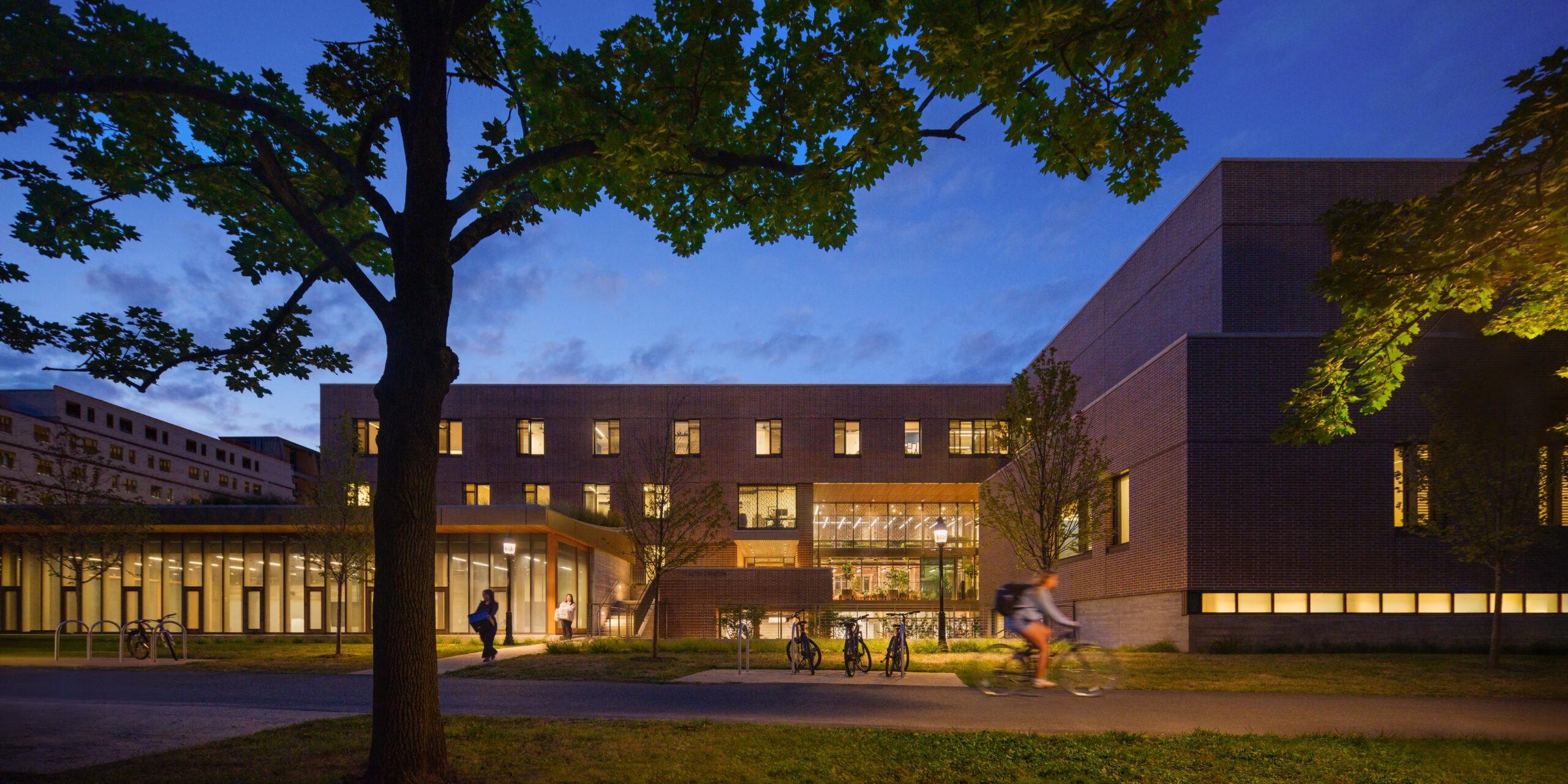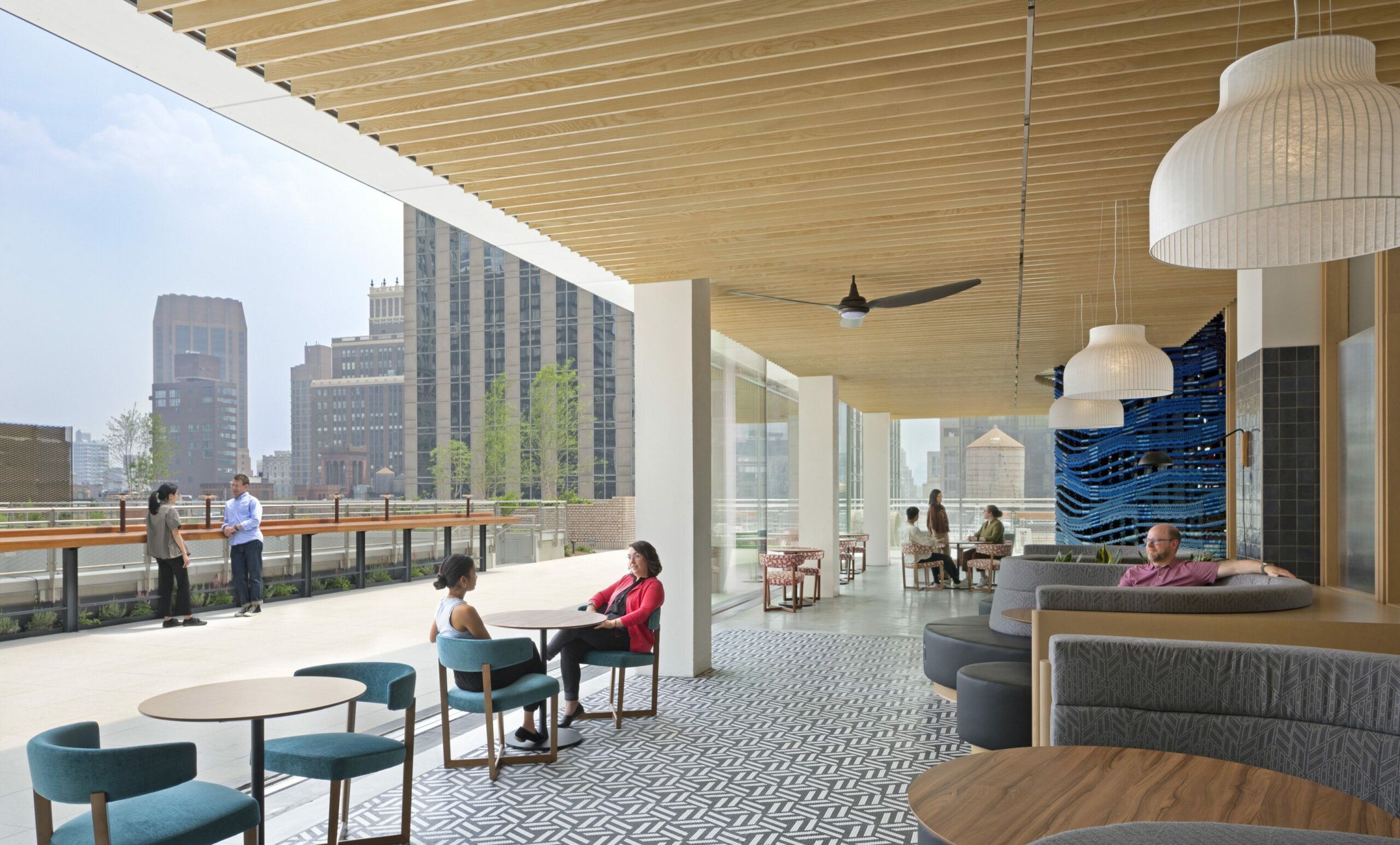
For us, architecture, interiors, and urban design are deeply interconnected. Two recent New York projects highlight our holistic approach: Amazon JFK27 transforms an aging department store into a modern workplace, advancing an architecture of repair that values preservation and adaptation over new construction. Microsoft Soho channels the neighborhood’s layered history, bringing the company’s creativity to the street. Both projects engage the city’s energy while interrogating structure, plate configuration, and material strategy to enhance comfort, health, and experience.
Amazon JFK27
An aging department store becomes a modern workplace
Built in 1914 and located in Manhattan’s Garment District, the Lord and Taylor Building stands as a testament to New York’s rich heritage of innovation and entrepreneurship. The 5th Avenue landmark served as the retail giant’s flagship store for over a century, helping to shape the city’s identity. Now this building has been transformed from a department store into a modern workplace for one of today’s most innovative technology companies.

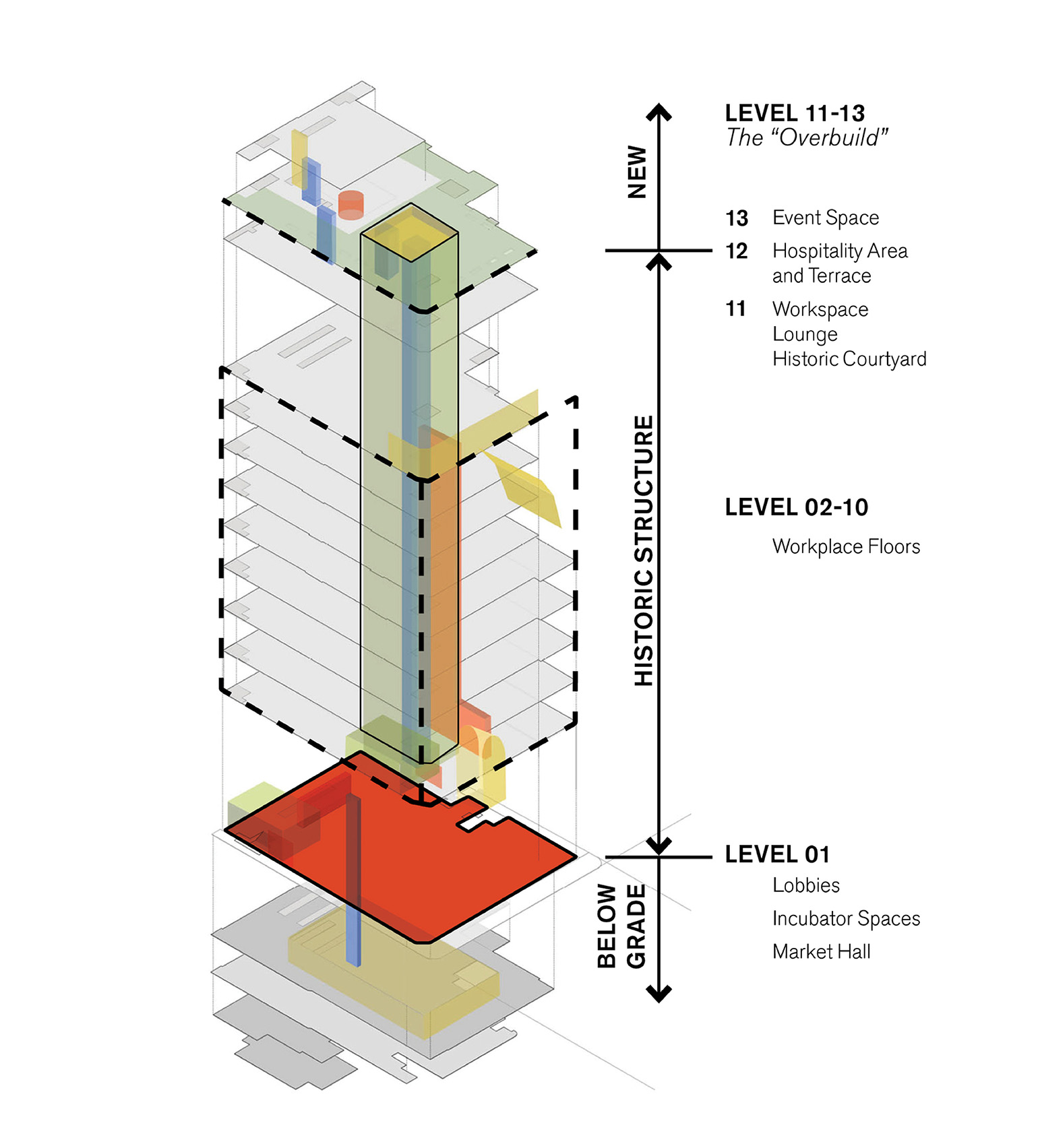
A spirit of reuse over replacement
Every aspect of the project plays off the New York experience, from materials that echo the neighborhood’s iconic cast iron and steel structures to panoramic views showcasing the city’s enchanting rooftop water towers. The work of local artists celebrates the textile traditions, while artifacts from the former department store enliven new spaces throughout the building.
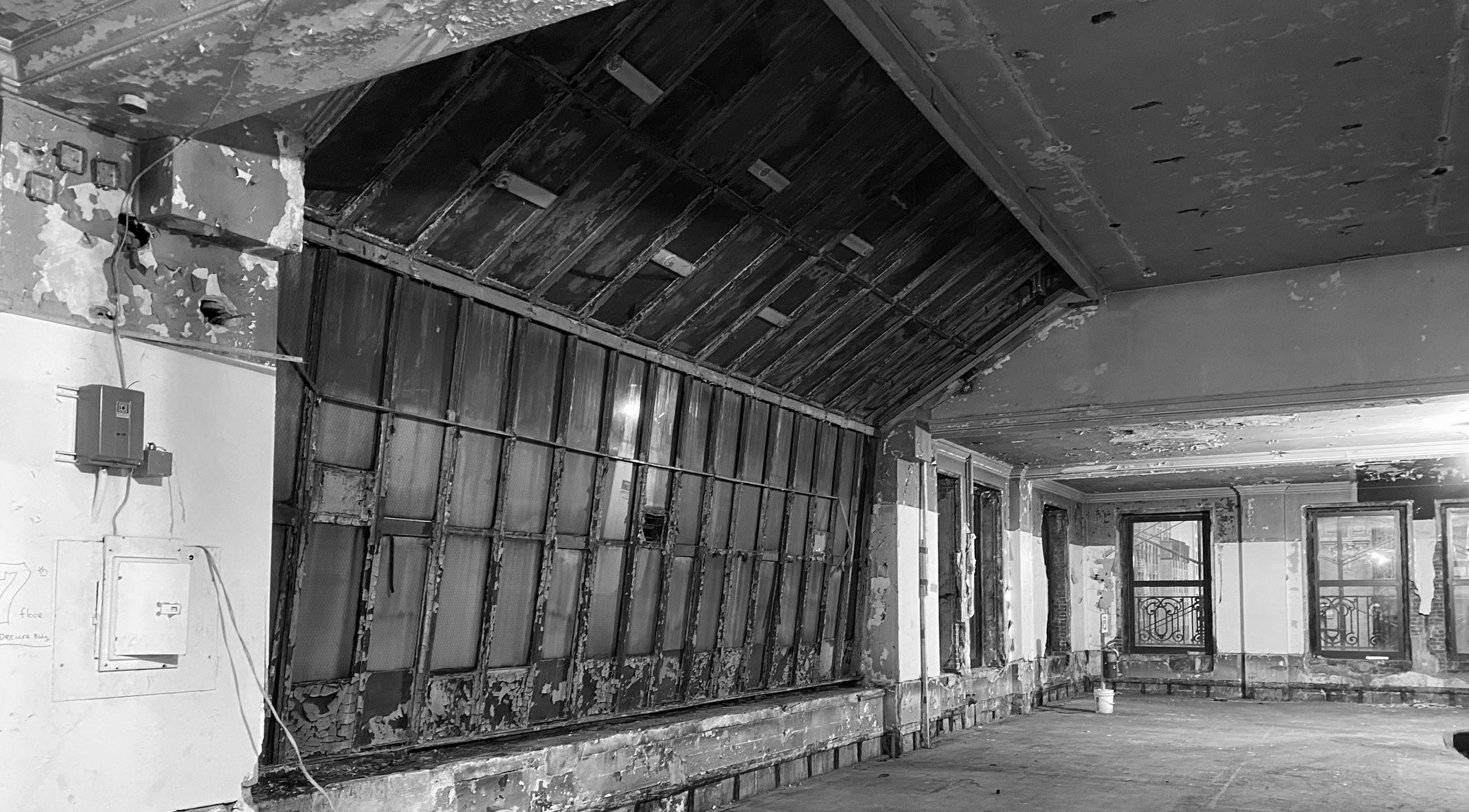
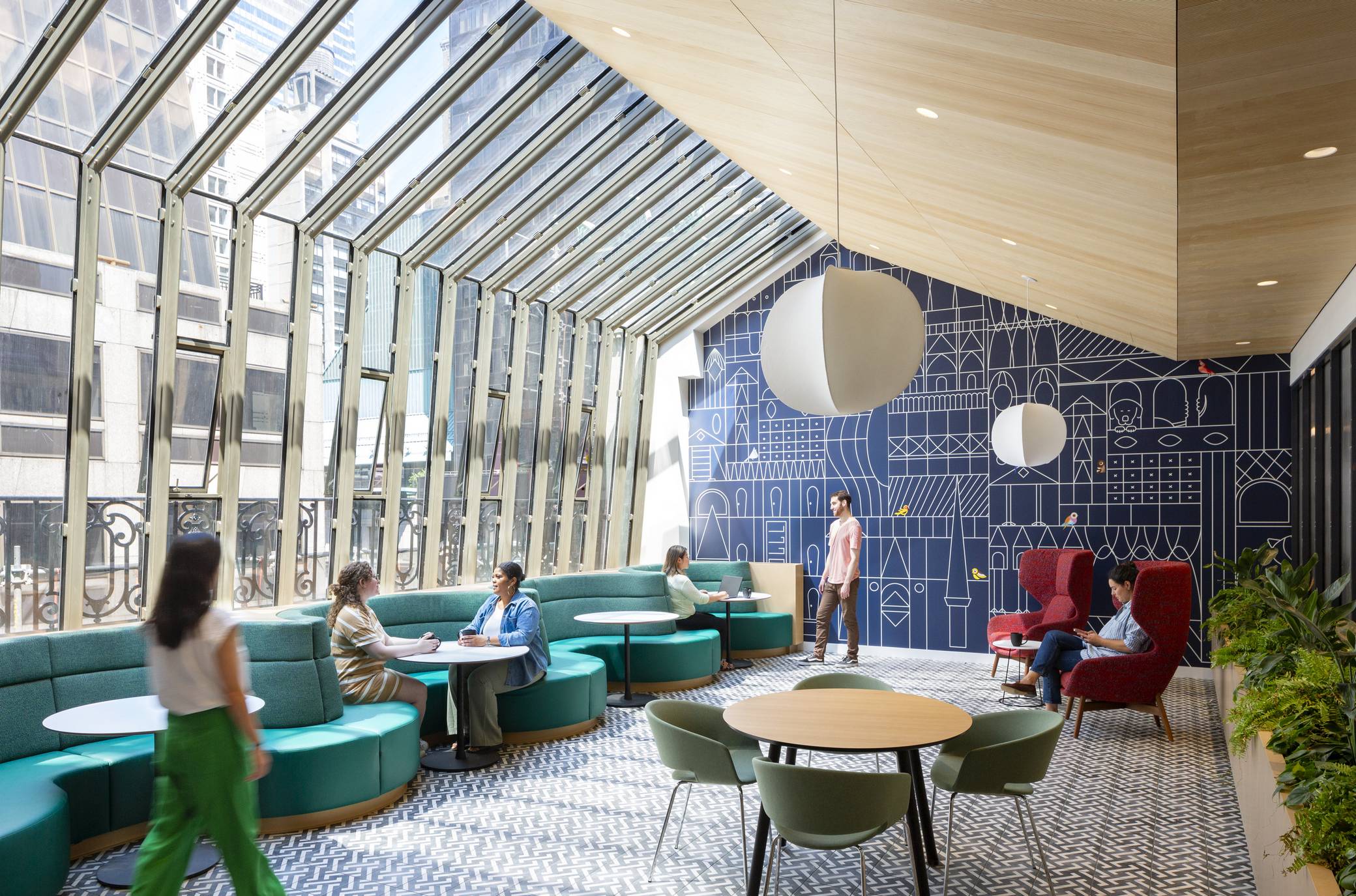
Community + place
Highly visible from the street, the ground floor accommodates food vendors and restaurants, welcoming both employees and passersby. Several public-facing spaces support partnerships between industry and academia, including the City University of New York (CUNY).

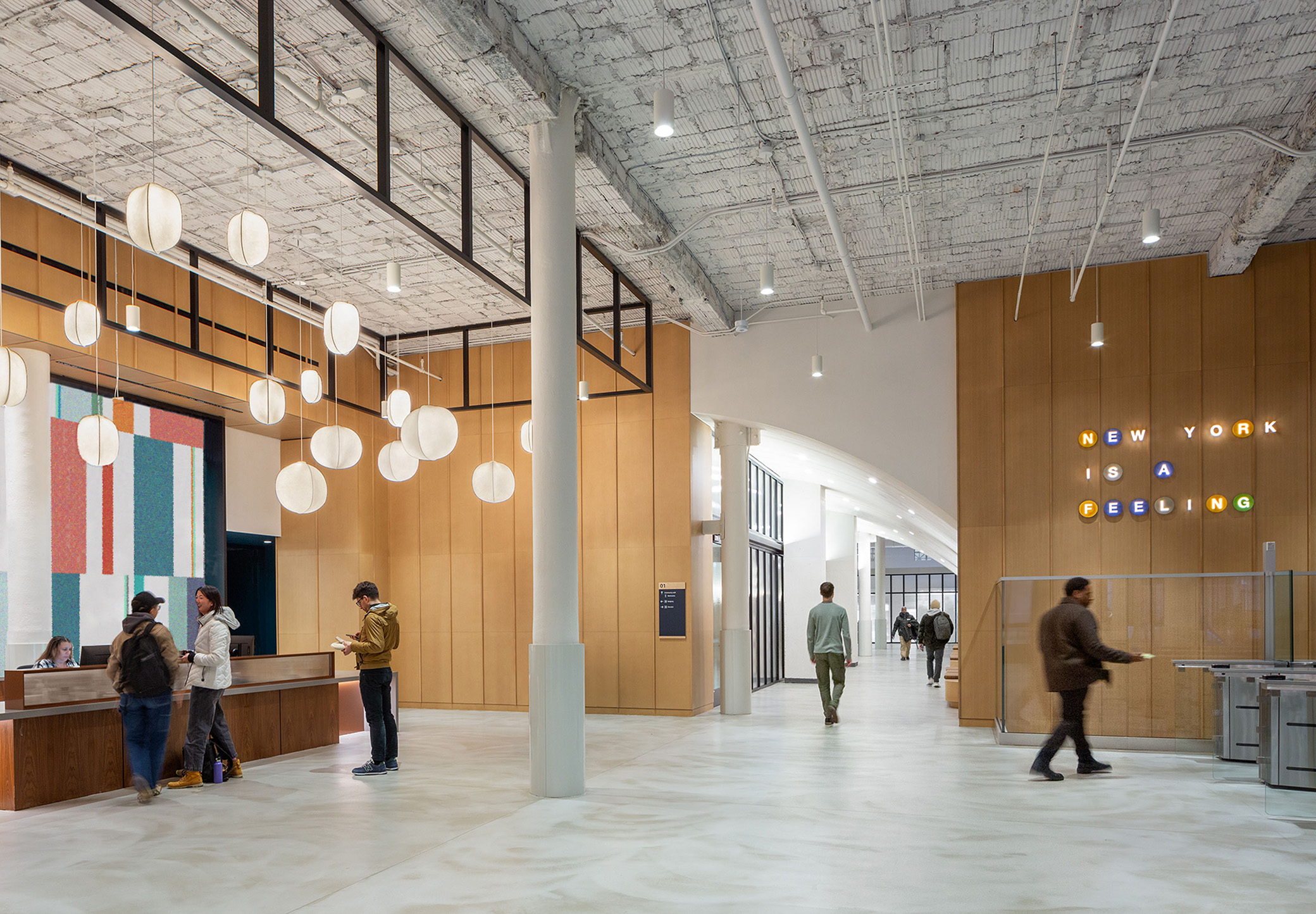
Connection + light
The centerpiece of the project is a grand stair that stretches from the second floor to the rooftop courtyard. This nine-story stair unifies the former department store and connects the building internally with the neighboring Dreicer Building, also renovated as part of the project.
Capped by a transparent lantern, the staircase channels natural light into the deep floor plates and encourages employees to move about the building. The elegant black staircase recalls Manhattan’s ubiquitous fire escapes.
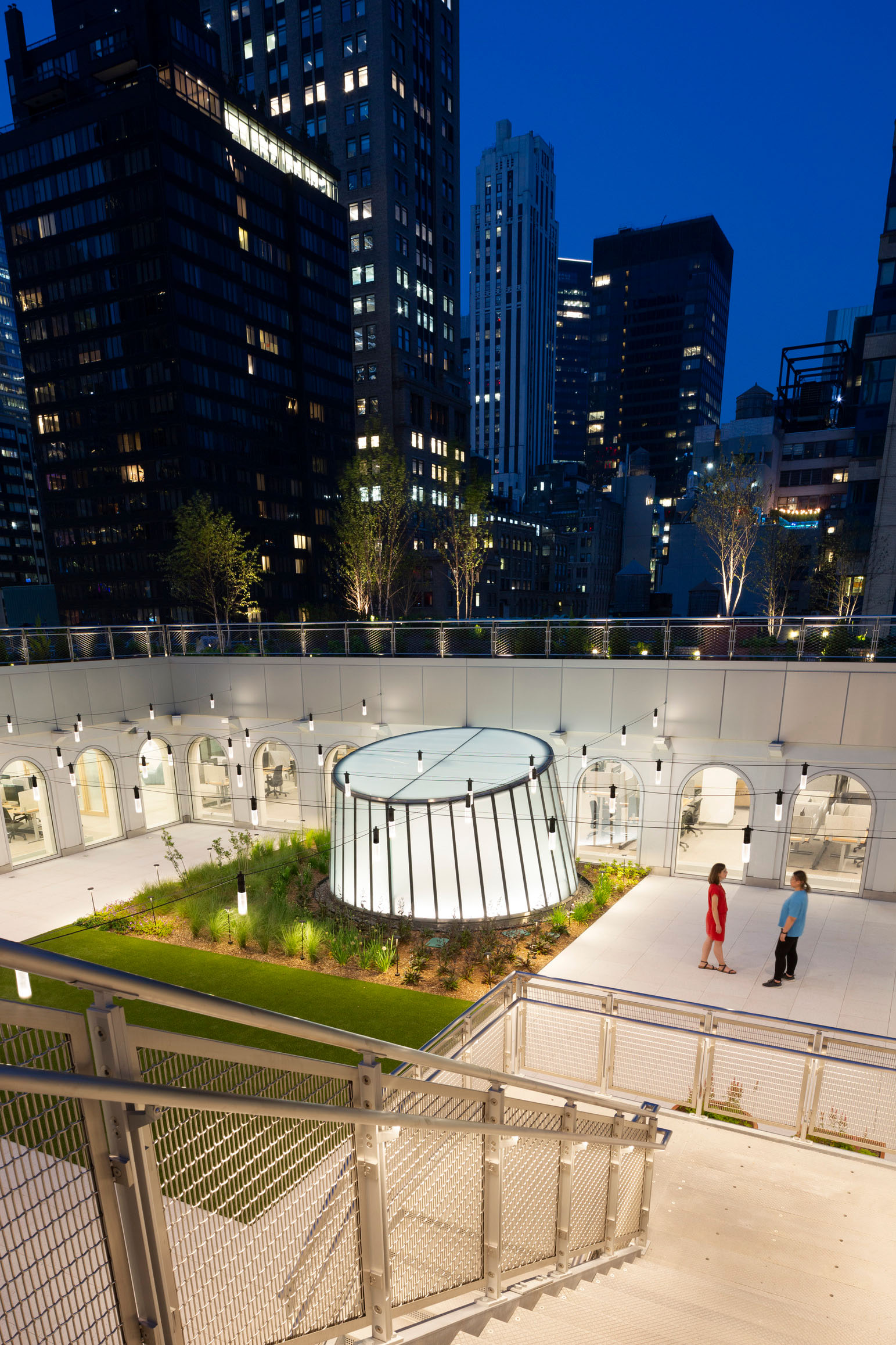
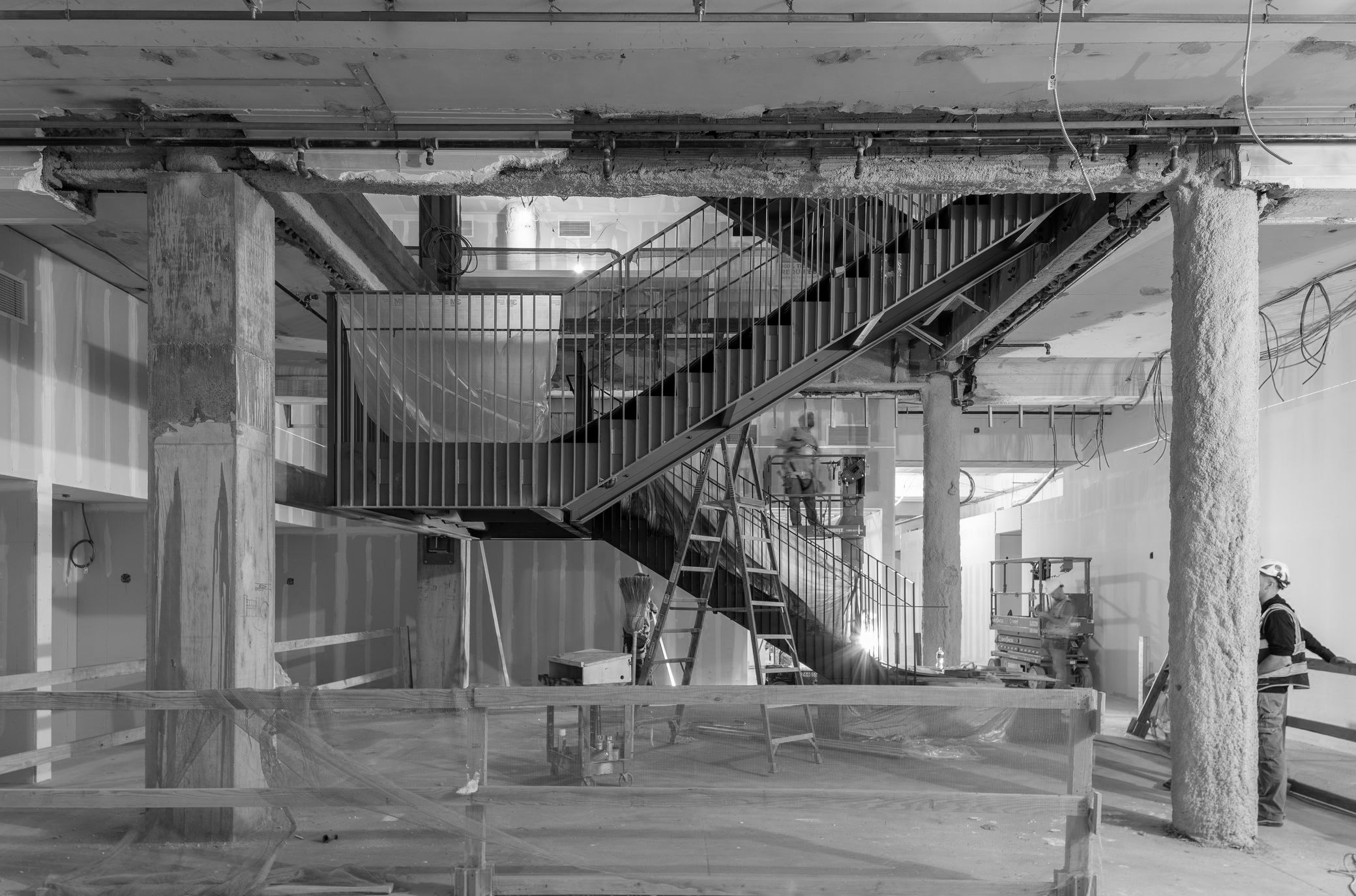

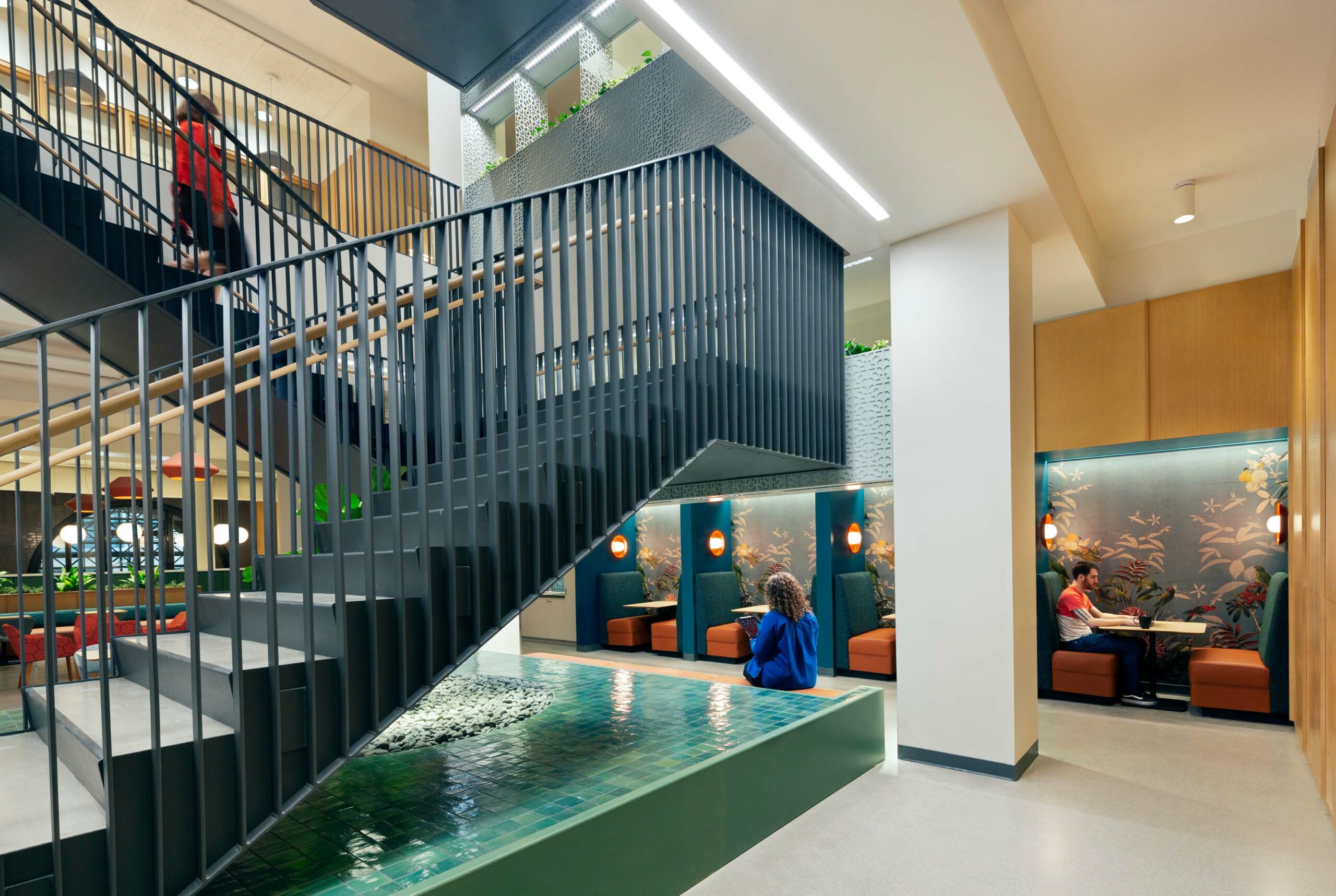
Artifact + memory
Artifacts and historic details serve as defining features in prominent social areas, inviting people to notice, touch, and tap into the collective stories of this place. Where historic elements were found to be well-preserved, they have been revealed and given new life. For example, cast iron arches and glass windows that once framed the building entry now “fold” down into an arched banquette.
Terracotta found in the ceilings and column capitals, bearing layers of details, have been left exposed.
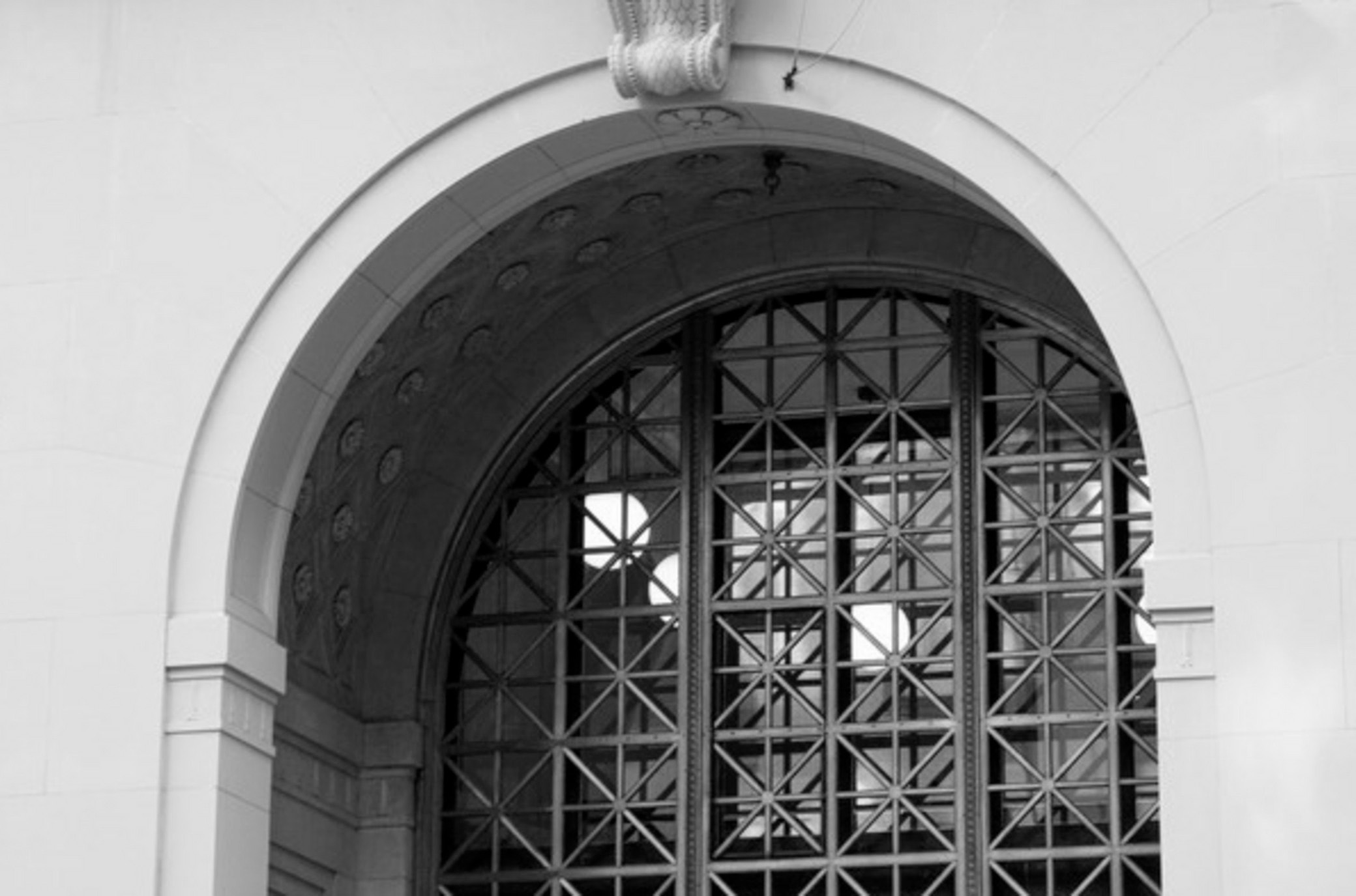
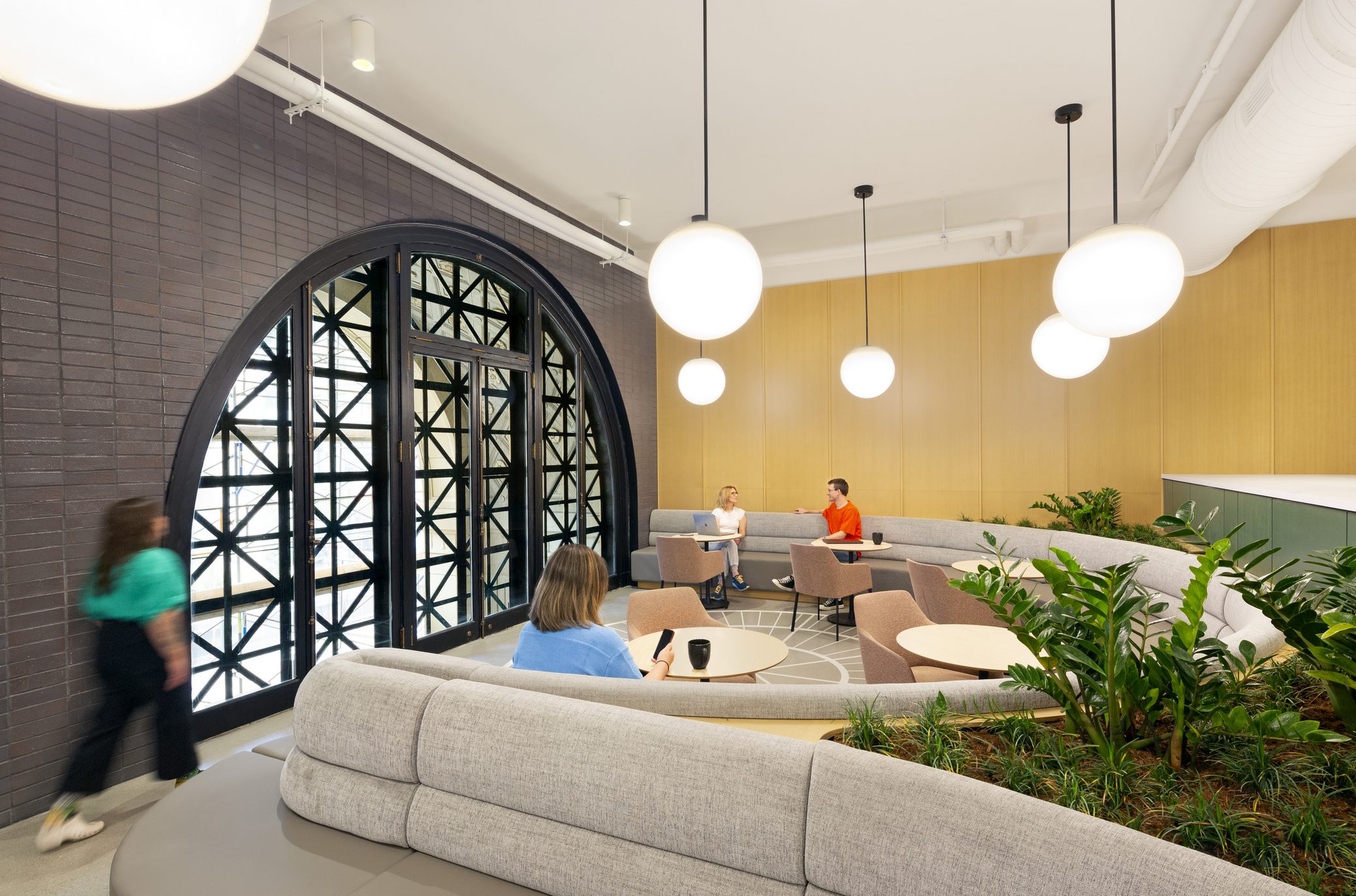
The overbuild
New dining and event spaces are perched atop the existing structure in a glass enclosed addition anchored by a new terrace and a refurbished sunken courtyard. The terrace invites employees outside with a perimeter pathway, a dog run, and access to the historic courtyard. These spaces bring the Amazon community close to some of New York’s most striking landmarks, including the Empire State Building and the Main Library.
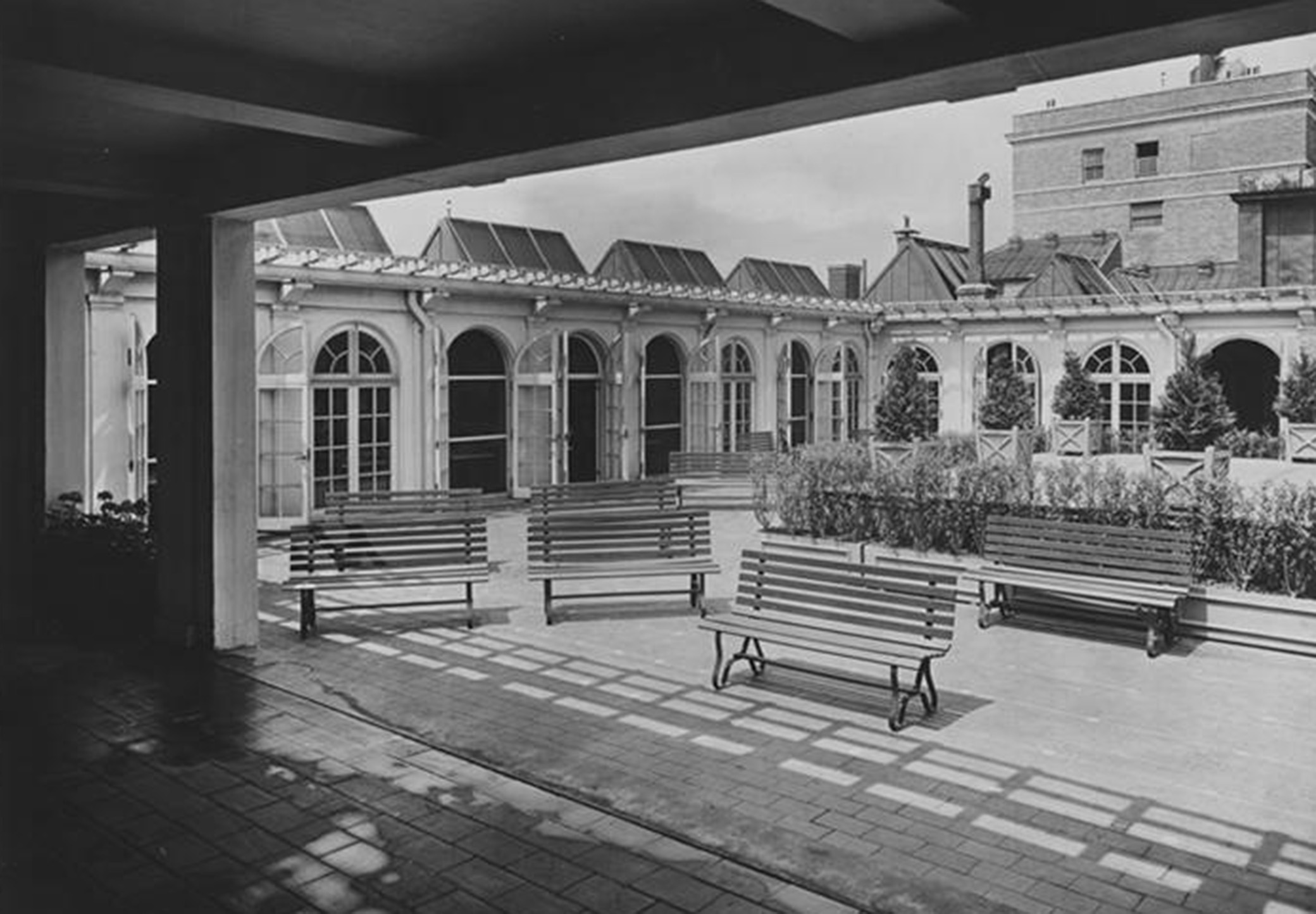
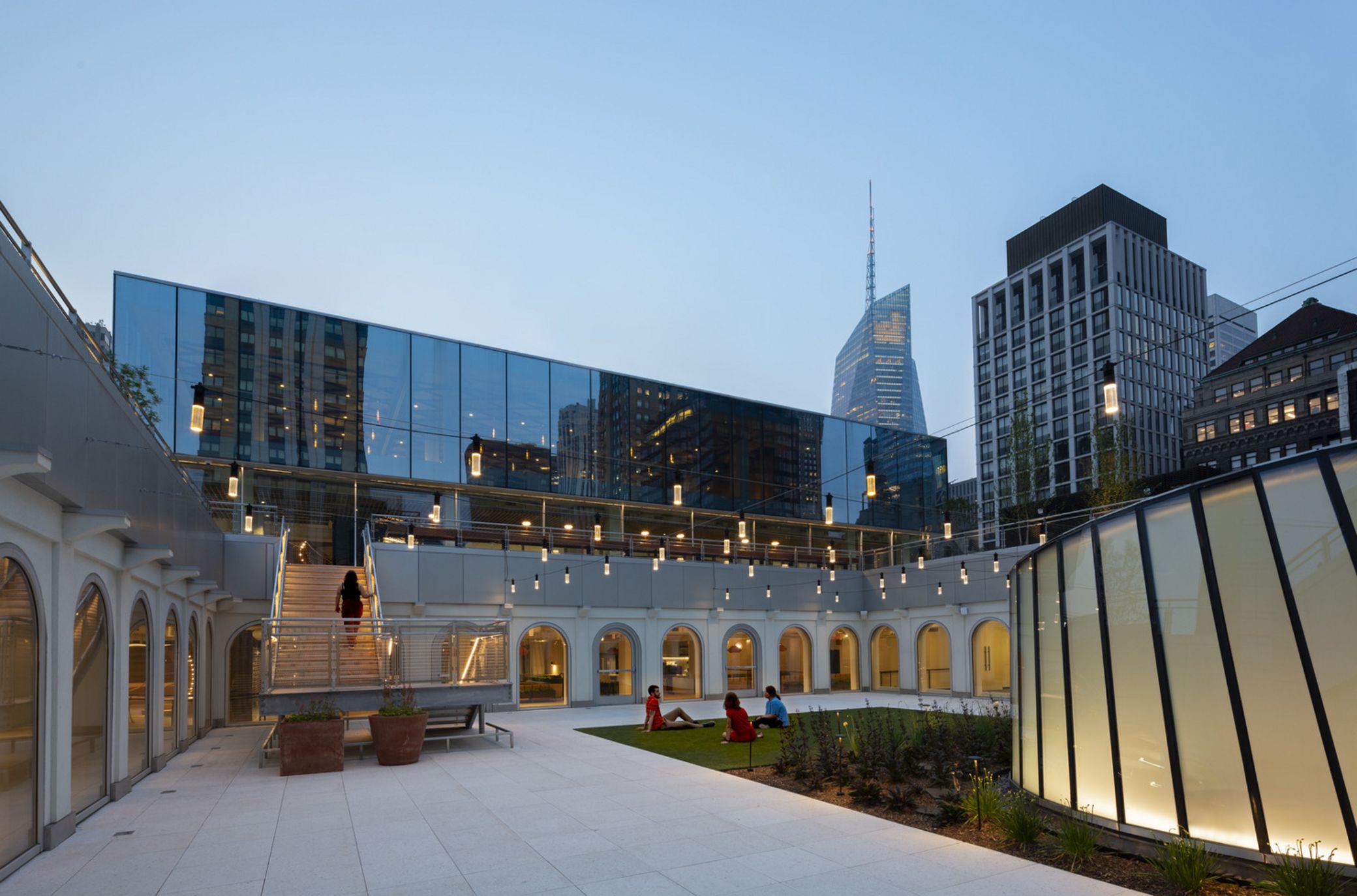
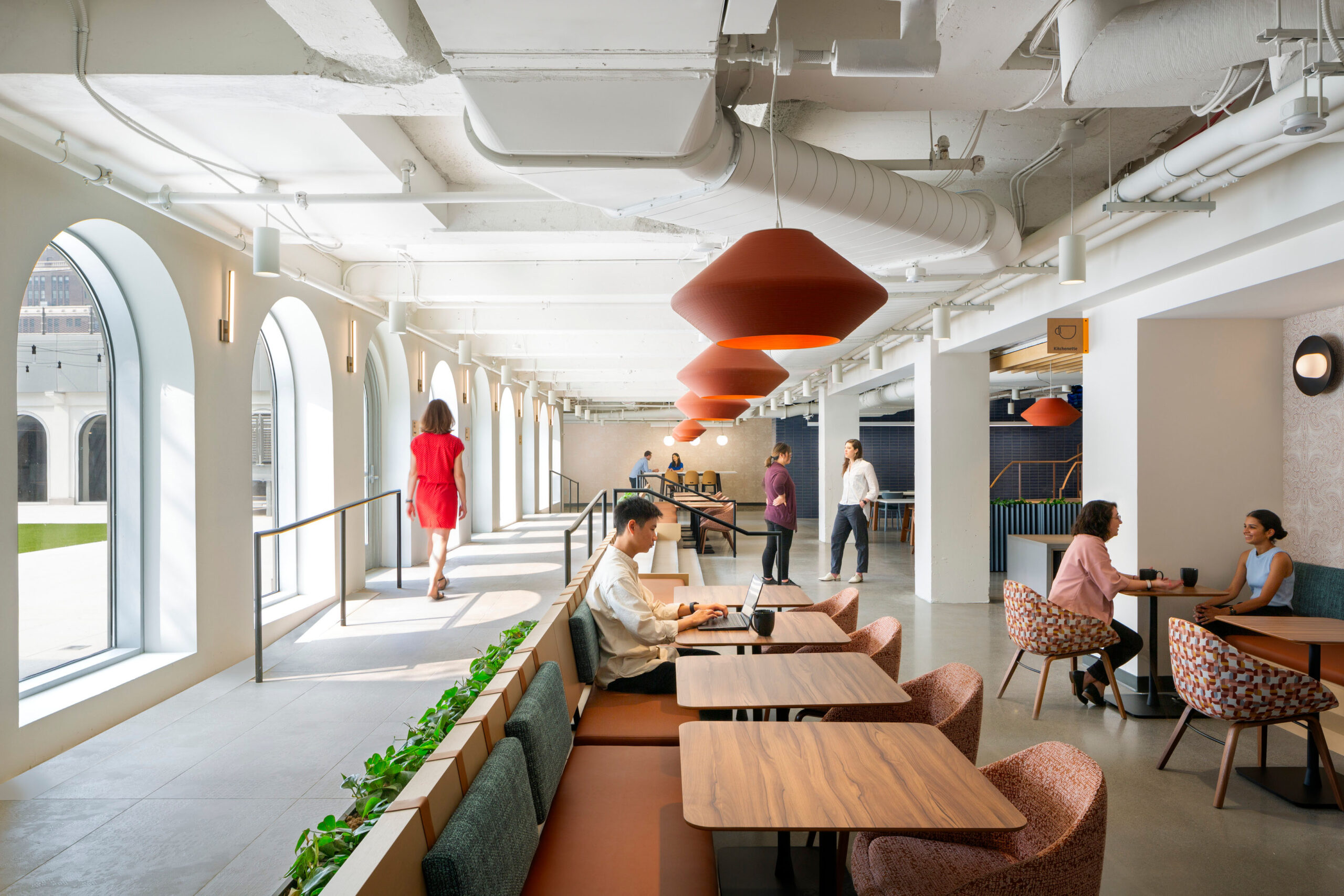
Microsoft Soho
A bold New York presence
Located at the prominent corner of East Houston and Lafayette Streets, Microsoft’s new workplace introduces a fresh and dynamic presence in New York. Visible from the street, the design captures Soho’s rich, textured history while introducing Microsoft’s creative spirit to the community.

New York’s porous universities inspire planning
Microsoft envisioned a community-driven environment where employees and visitors could engage in the broader dialogue spurring innovation in New York. Taking cues from the city’s porous academic environments, design balances vibrant social and collaborative areas with spaces for focused, independent work.
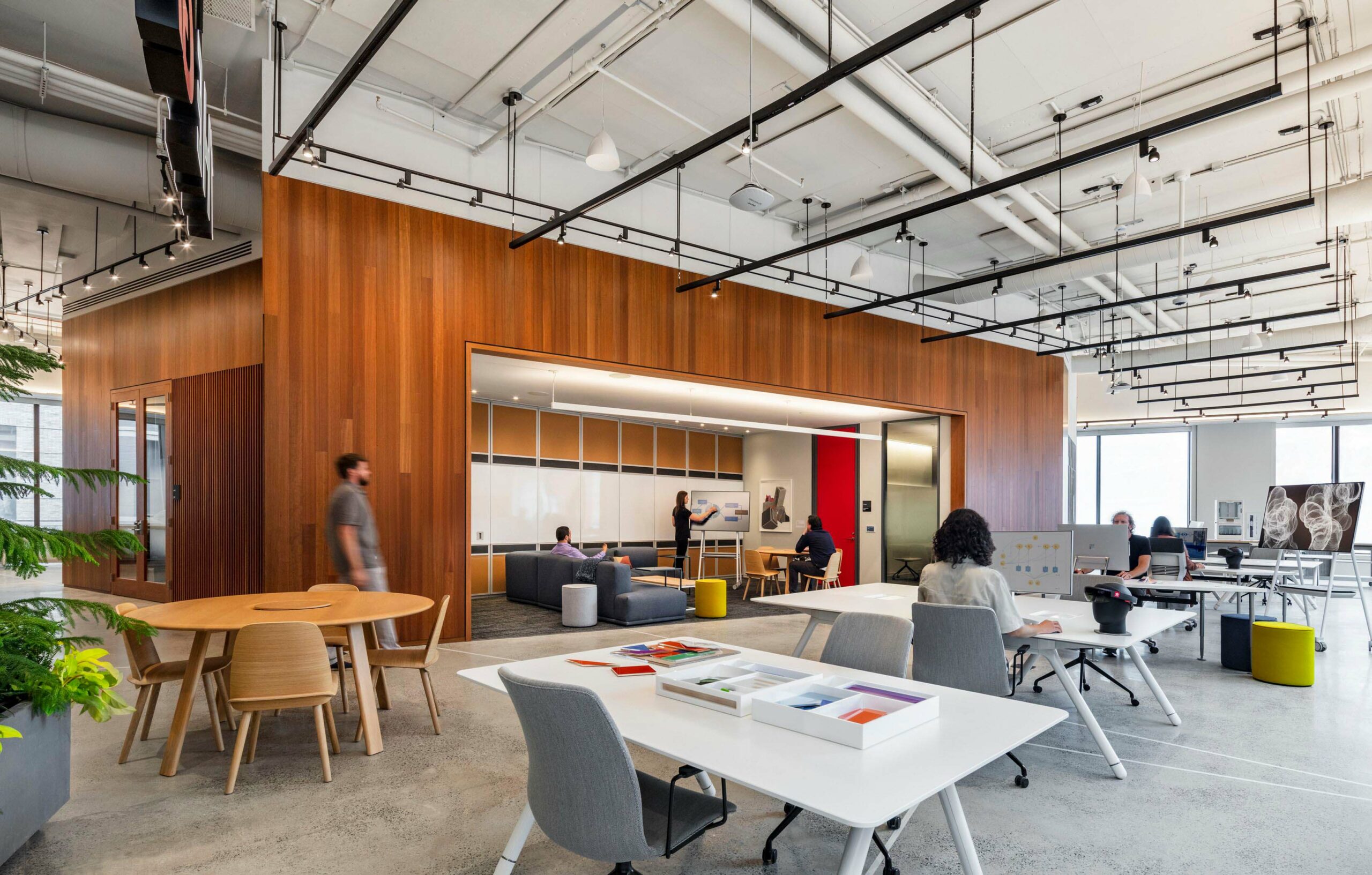
Inspired by the traditional university library, researchers’ workspaces are divided by “stacks”—custom millwork providing storage, whiteboards, and personal libraries. The combination of wood, books, soft lighting, and hidden nooks evokes an academic atmosphere—one that could only happen in New York.
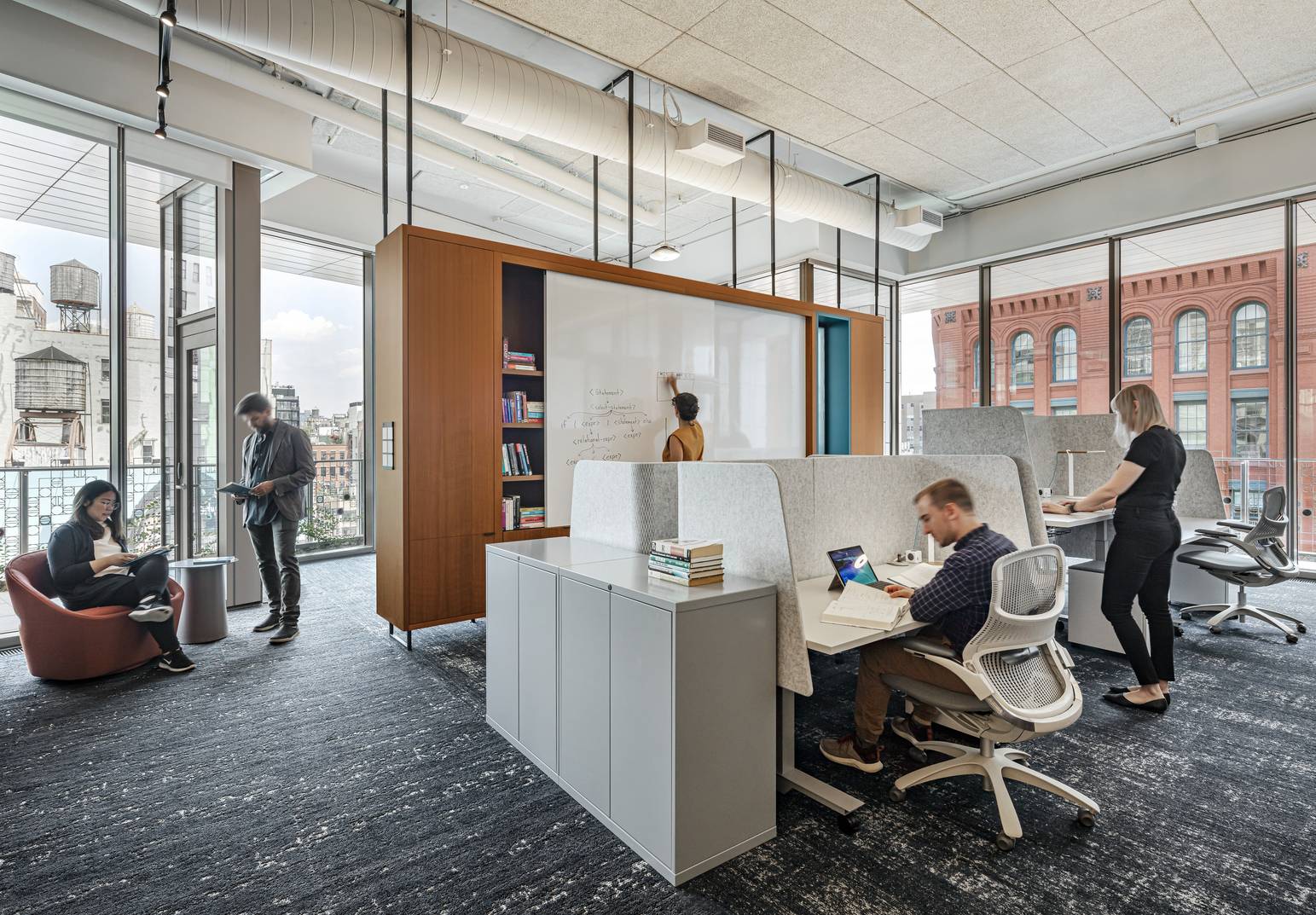
Materials knit this workplace together
The extensive use of cherry wood ties the interior to the adjacent, iconic brick façade of the Puck Building, creating a warm, inviting “heart” visible from the street. Rough concrete tile wraps around the building’s core, reflecting the urban character and energy of the surrounding neighborhood.
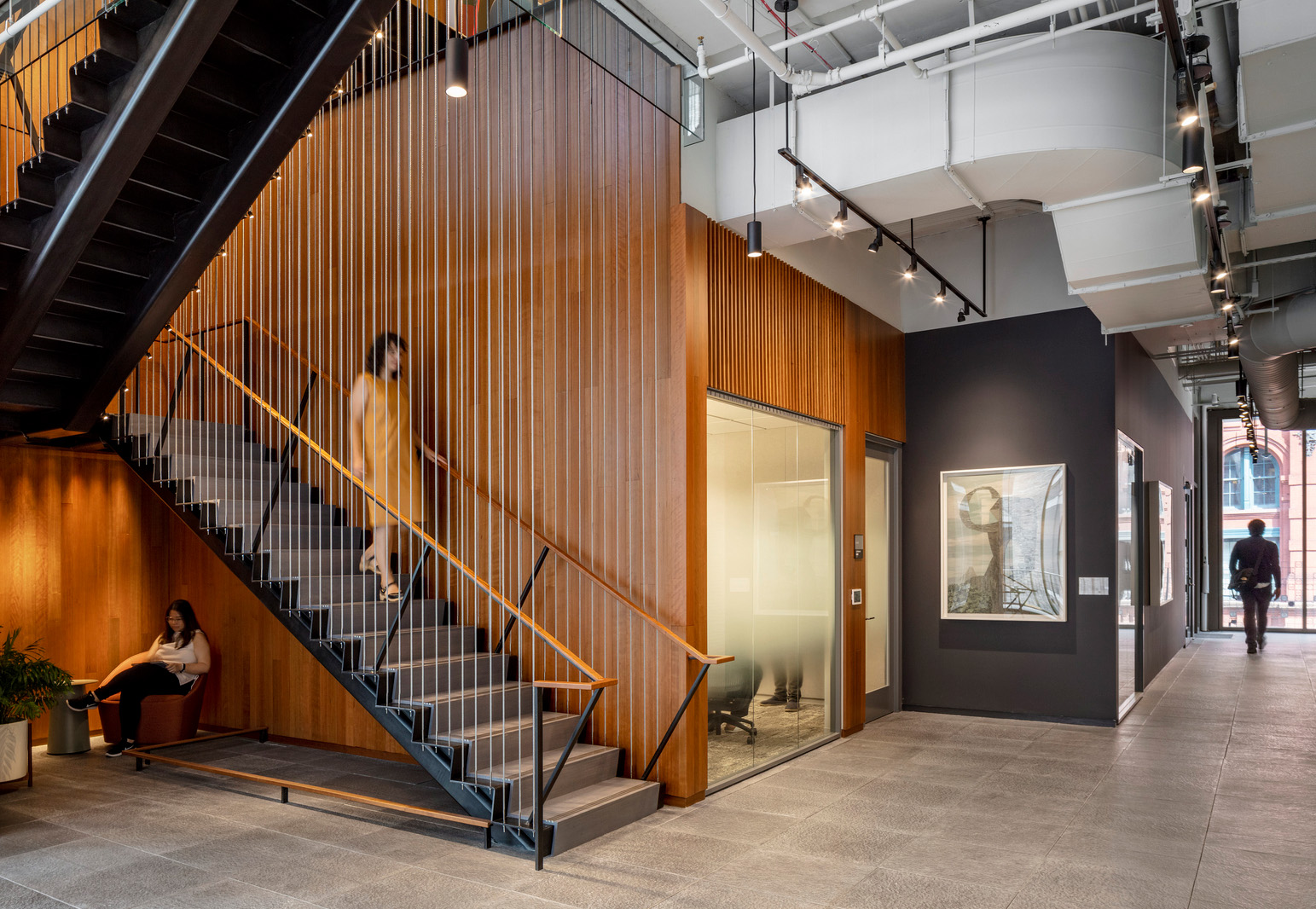
Vertical connectivity
A dynamic communicating stair links the floors, creating a fluid connection between different work modes and levels. Crafted from blackened steel and stainless steel cable, the stair nods to Soho’s iconic cast iron buildings and fire escapes, paying homage to the neighborhood’s rich history of creativity and craftsmanship.
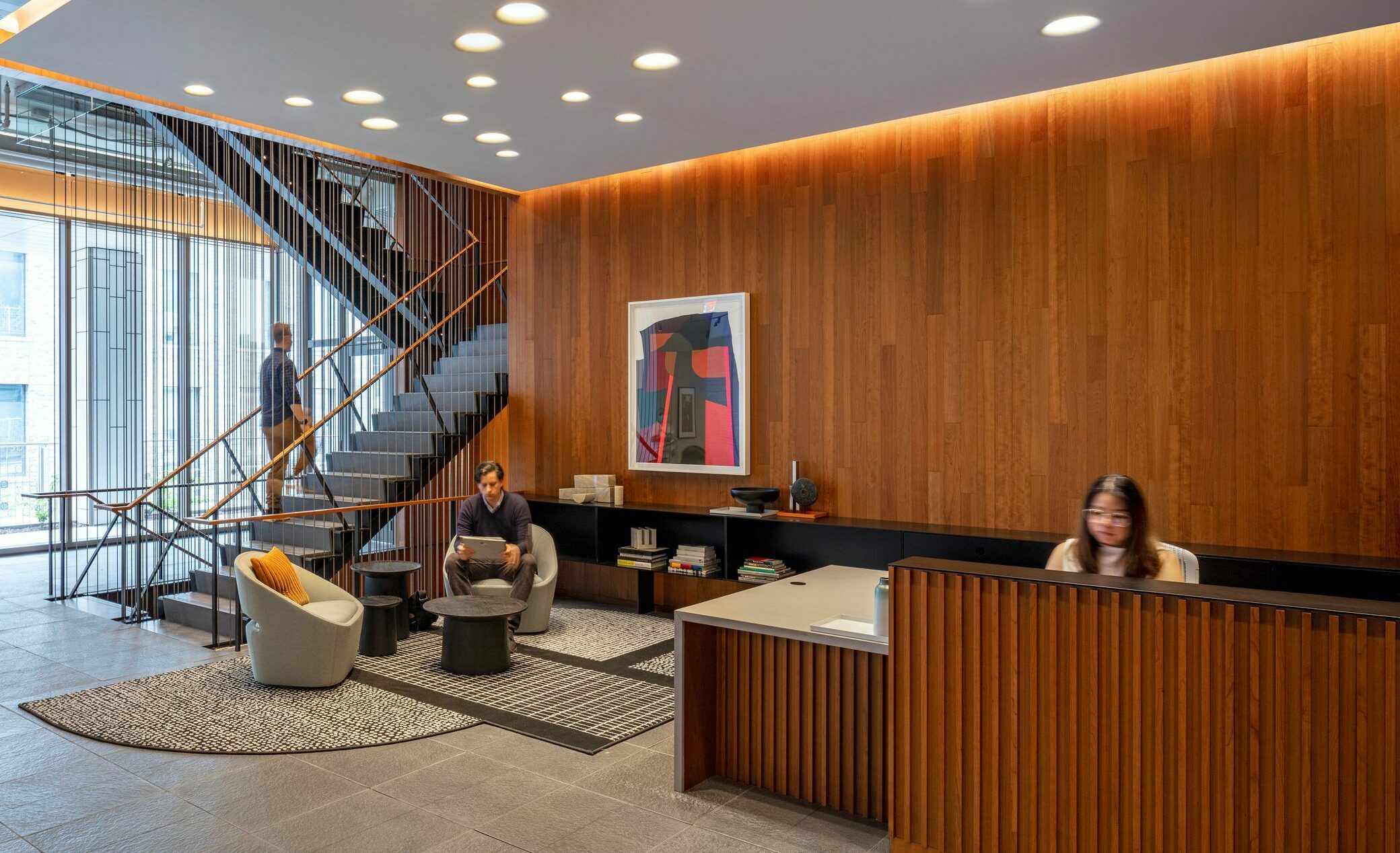
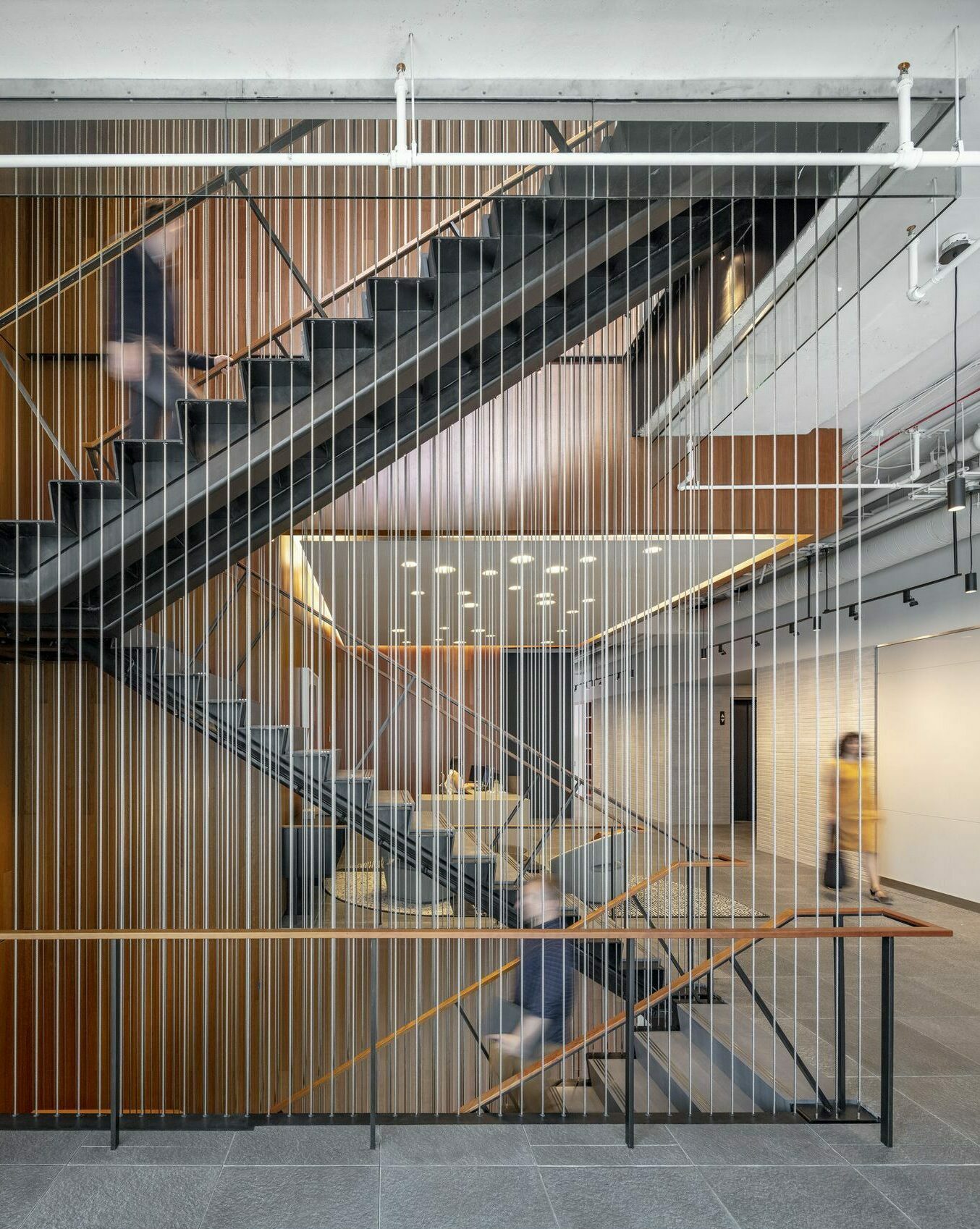
The Garage: a public-facing innovation hub
Located on the second floor—the building’s largest floorplate—The Garage is a flexible, multipurpose event space designed for public engagement, with direct access from both the street and lobby.

This space also serves as a dynamic maker space and learning lab where employees can experiment. Retractable walls allow The Garage to expand into adjacent spaces, including a multipurpose theater that accommodates up to 120 guests.
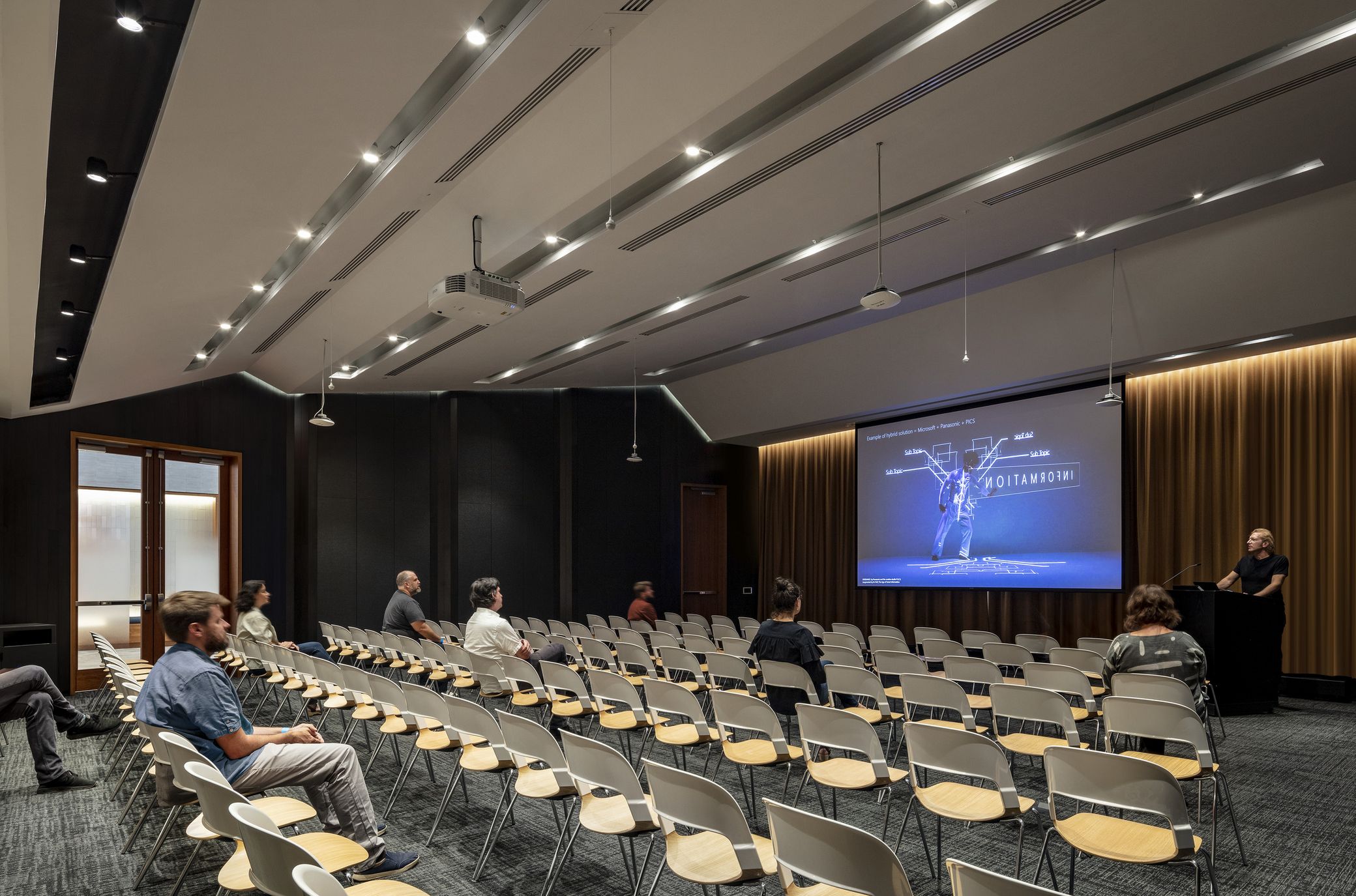

Gathering and dining
The sixth floor serves as a central gathering space where employees can dine and relax. A casual tea room opens onto a large wrap-around terrace, offering flexible seating and tables that can be easily reconfigured for any group size or event.
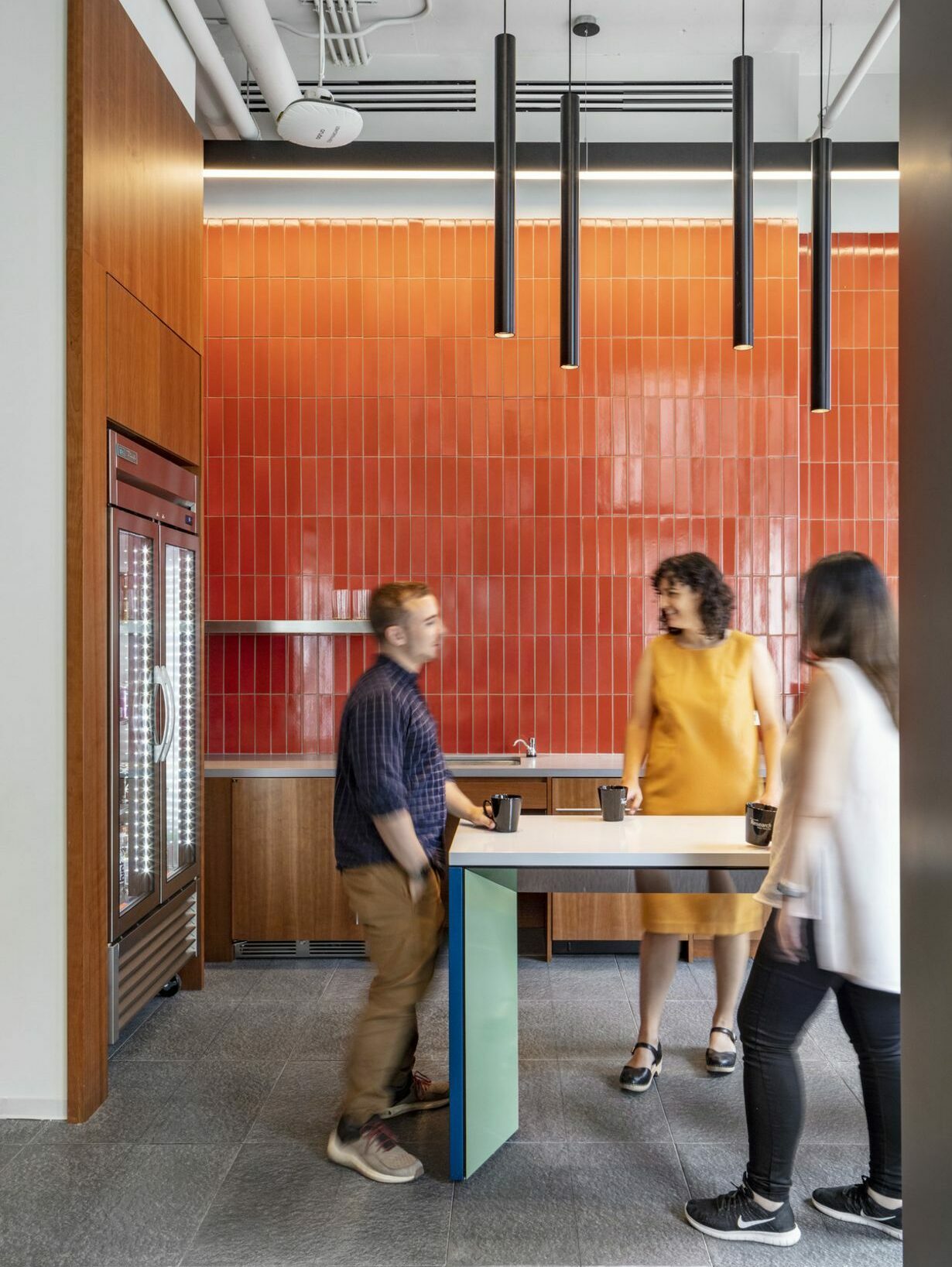
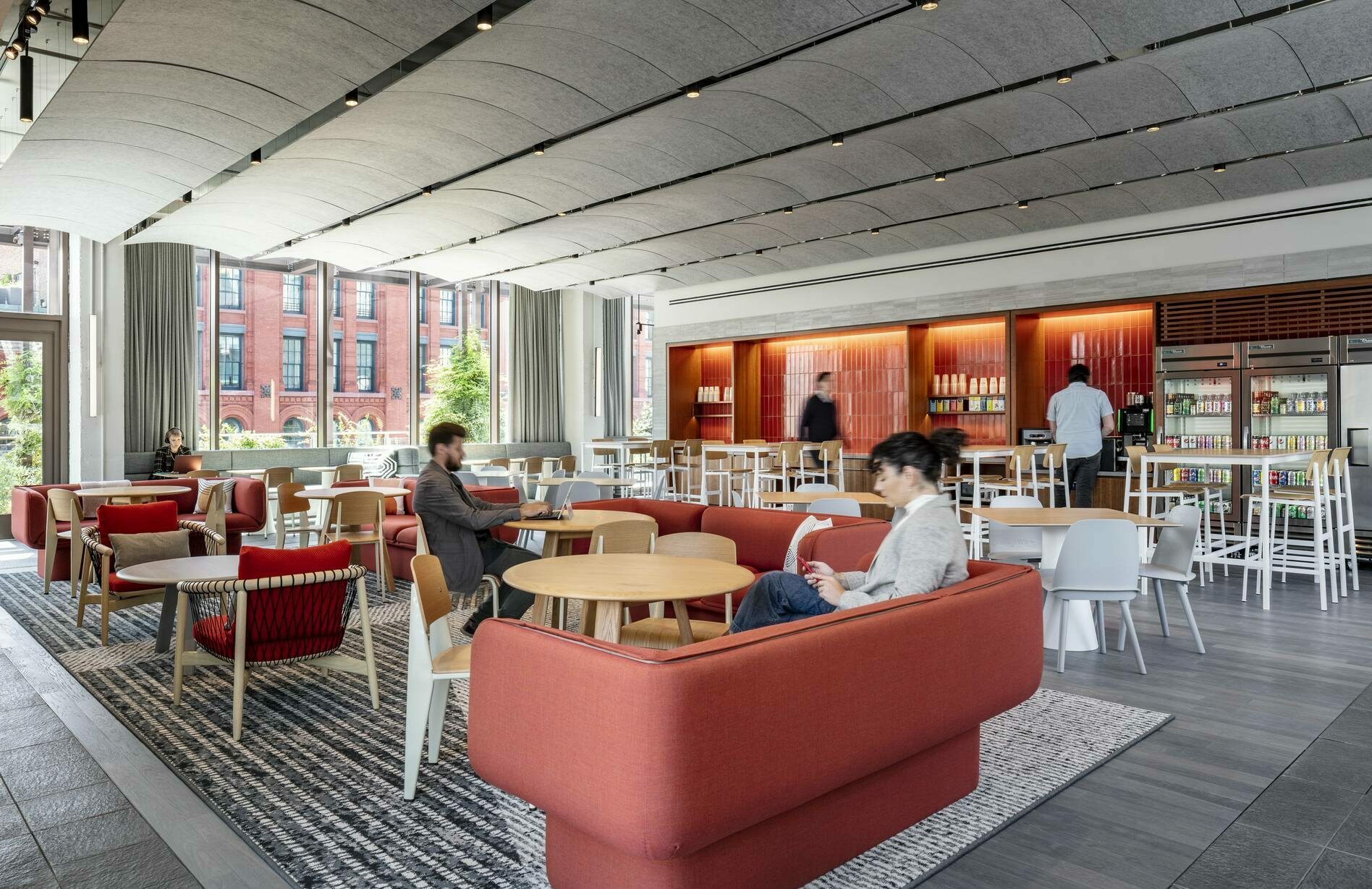
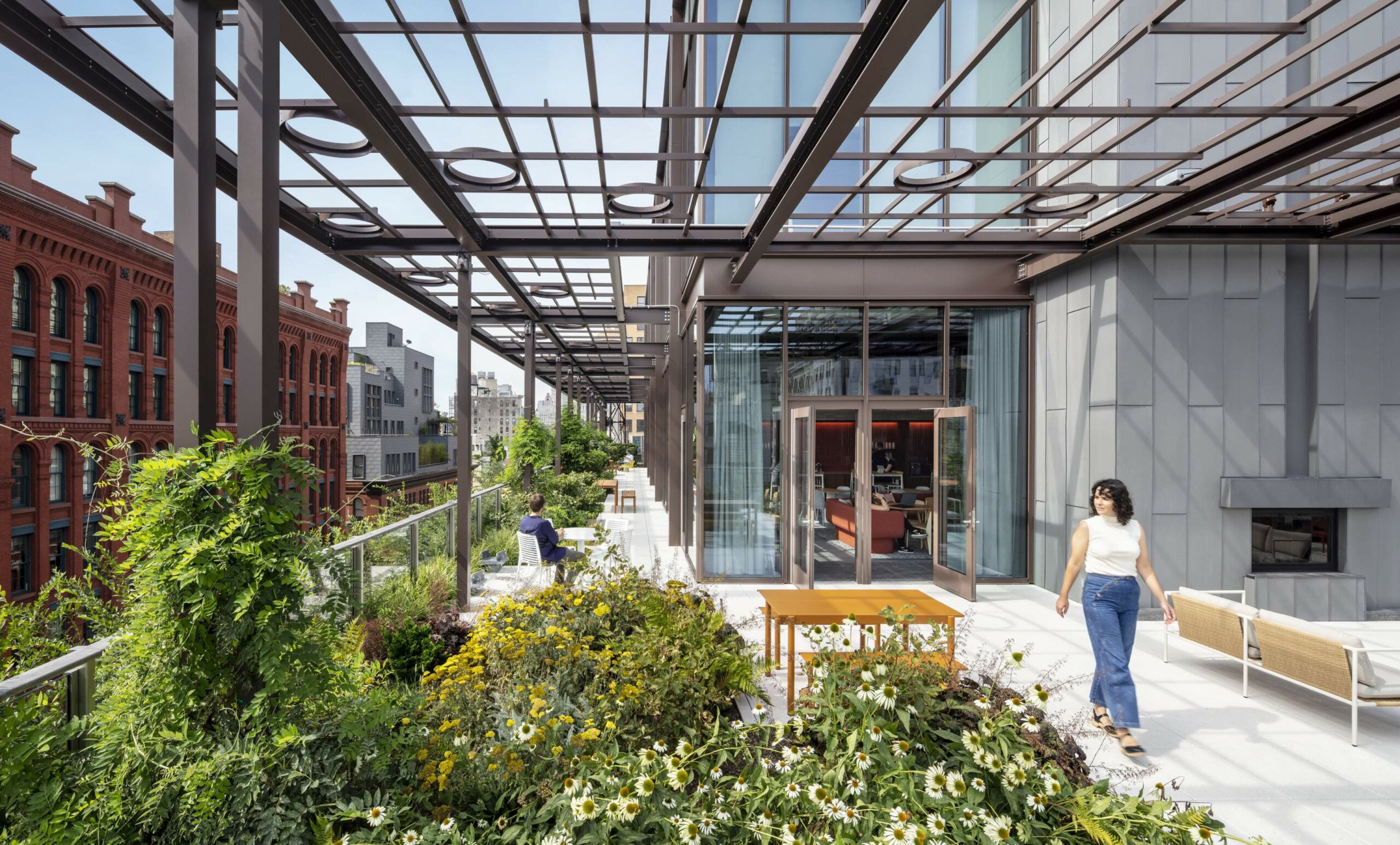
Enduring Appeal
In our experience, craft, technical innovation, and sustainability go hand in hand. When we create environments that perform exceptionally, spark creativity, and foster affection—especially when rooted firmly in place—they often endure. Attached to a layered and well-considered space, users are more likely to refresh it minimally, and only as needed, than replace it. This design ethos minimizes carbon and waste while fostering longevity.
